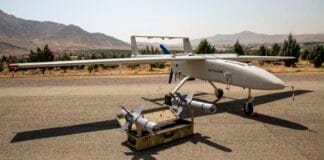The wave of Arab revolutions appears to have stalled in Syria in the face of a massive crackdown by the regime.
Opposition to the regime is united in its rage towards an intolerably harsh police state and President Bashar al-Assad’s abolition of fuel subsidies during a drought, which allowed food prices to skyrocket.
Syrian workers struggle to survive low wages and high inflation, while youth unemployment is on the rise. Economic and democratic demands similar to these also united the movements that toppled dictators in Tunisia and Egypt.
Faced with rising domestic protests, Assad announced reforms, including the lifting of the 48-year old emergency law in April, but this could not pacify the movement.
The very next day, thousands of defiant Syrians took to the streets calling for an end to the regime. In the southern city of Deraa, thousands stood together against Assad’s soldiers chanting “We are not afraid!”
On May 7, desperate to stop the spread of rebellion, the army launched a siege on Baniyas in the north. A week later, infantry brigades and tanks moved into cities and towns where anti-regime sentiment was live and kicking. A number of cities were place under siege. Electricity and water were cut off and the army started confiscating flour and food.
The Syrian Observatory for Human Rights claims that 939 civilians have been killed since the beginning of the uprising ten weeks ago. But thousands have continued to demonstrate despite the crackdown.
Difficulties
Unlike in Tunisia and Egypt, there have been very few government resignations or military defections so far. The notable exception was during the crackdown on Deraa, when the fifth Army Division (mainly conscripts) opened fire on the Fourth Army Division after it began firing into crowds. Some 200 low-level Ba’ath party members also resigned over the incident.
The regimes in Tunisia and Egypt were not synonymous with the dictator. The uprisings in these countries forced the hand of the military elite which recognised the necessity to remove the despot in order to preserve its own privileges. In Syria however, the status of ruling elites is tied directly to the Assad family, making a similar move unlikely.
Religious and ethnic tensions are also obstacles to removing the regime. Bashar al-Assad belongs to the minority Alawite Shia sect of Islam, which dominates the ruling class in a 74 per cent majority Sunni Muslim country. The demonstrations began in the Sunni dominated centres like Deraa and Damascus in the south.
Alongside the religious divisions is an ethnic split. The Kurdish population, concentrated in the north along the Turkish border, suffers from harsh repression and decades of dispossession with limited access to land ownership, healthcare and education. Demonstrations in the Kurdish north have also been reported in recent weeks, most notably in the city of Qamishli.
Fake anti-imperialism
Assad has continually portrayed the uprising against him as a foreign-backed conspiracy to sow sectarian strife in Syria. Like his father Hafez al-Assad, he poses as an anti-imperialist and supporter of the Palestinians. Syria has aligned itself with the regime in Iran and supported Hamas and Hezbollah, earning it the hostility of the US. It was denounced by the Bush administration as part of its expanded “axis of evil” in 2002.
This had led some on the left to defend the regime. Venezuelan President Hugo Chavez has called Assad a “brother”, and blamed the US for stirring up the protests as a pretext for intervention.
This is a serious mistake, which ignores the fact that it can be in the interests of the ruling class of some countries to oppose US interference in their affairs. But this does not make these regimes otherwise progressive or democratic.
In previous decades many Arab regimes presented themselves as “anti-imperialist”, such as Nasser in Egypt during the 1950s and 1960s, and more recently Muammar Gaddafi in Libya. This did not stop them repressing internal opposition from the left and other groups.
Syria’s anti-imperialism has never been consistent. The Assad regime supported Yasser Arafat’s Palestine Liberation Organisation (PLO) by attempting to invade Jordan following the slaughter of thousands of Palestinians by Jordan’s King Hussein in Black September in 1970. But at the same time Palestinian refugees were being repressed within Syria. Even worse, Syria invaded Lebanon in 1976 in alliance with right-wing Christian forces to contain the leftist and Palestinian guerrilla groups.
The scale of the repression and killing by the Syrian regime poses immense challenges for the movement.
However ethnic and sectarian divisions can be eclipsed through workers’ unity. Common class interests around economic demands and the self-activity of workers can produce a pole of attraction to the defectors from the army, the rural poor and the unemployed.
A workers’ movement also has the industrial muscle to wrestle power from Assad and his army into the hands of Syrians in their millions.
By Tony Bozdagci





